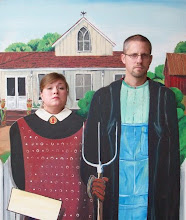This is the first of what are known as the "Pastoral Epistles" (1&2Timothy and Titus). Timothy was a pastor, as was Titus. While there is a good bit of instruction that is pointed directly to pastors and church leaders in these epistles, there is still plenty there for the layman as well. Even the layman needs to know things like how to point out a false teacher (1:3-11), how and for whom to pray (2:1-2,8), what is required of church leadership (3:1-13), how to take care of the needy in the church (5:3-16), how to provide for and relate to their church leaders (5:17-25) and to beware of the deceitfulness of pursuing earthly wealth (ch6 - various verses).
The Gospel is a key component in this epistle as well. From the outset, Jesus Christ is seen as our "hope" (1:1). The purpose of the coming of Christ into this world was to save sinners (1:15). Jesus is seen as the "go-between" or arbiter in the relationship between a holy God and sinful man (2:5). Paul ends chapter 3 with that glorious hymn of praise for Jesus Christ (3:16). In 4:10, God Himself is given the title "Savior"! The Gospel is central to this book and it also must be central to our lives!
For the pastor, this book serves him well in many ways. It prepares him for protecting the flock from false teachers (1:3-11). It helps him by defining roles for both genders in the church (2:9-15). It lays out very clearly the qualifications that the minister must meet (3:1-7), and the qualifications for the deacons in the church (3:8-13). It gives needful instruction in the areas of the minister's public and private life (4:11-16; 6:11-16). It gives instruction on how to minister to and relate to various groups in the church (5:1-6:2).
This book proves to be a very helpful and needful "handbook" for both pastor and parishioner!
Monday, November 16, 2009
Subscribe to:
Post Comments (Atom)

No comments:
Post a Comment